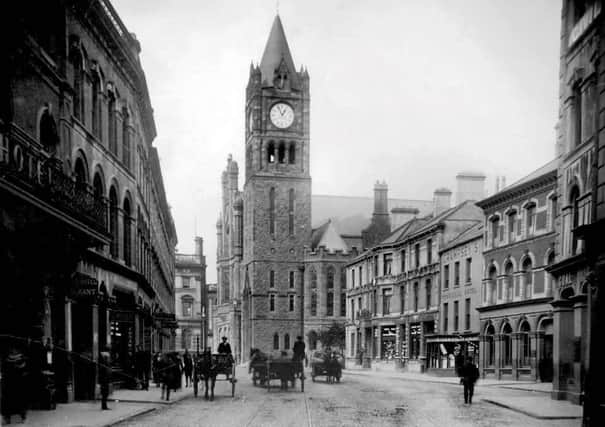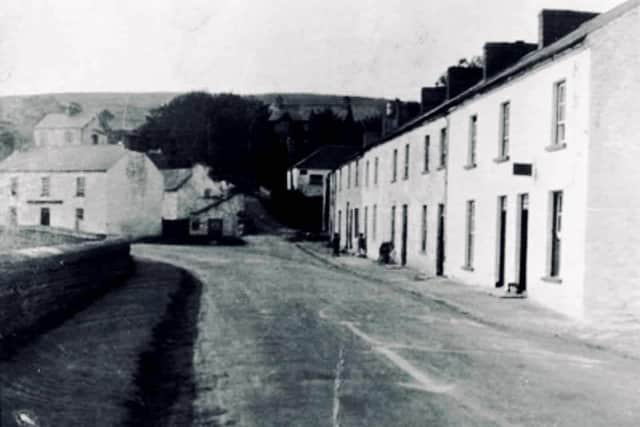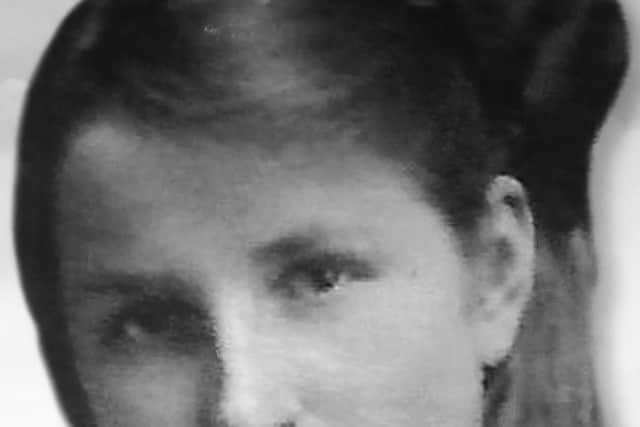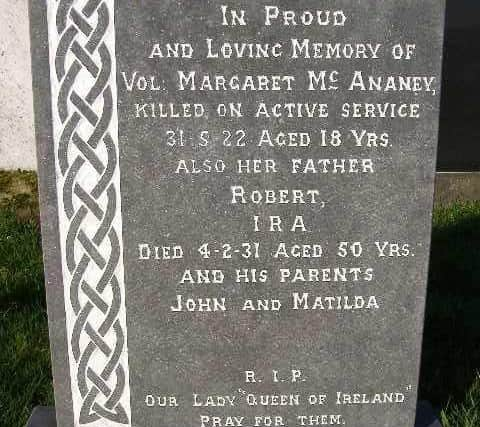Event in Derry to mark centenary of death of teenage Cumann na mBan member


The event has been organised by the Bogside and Brandywell Monuments Committee and will see a plaque unveiled at Ardfoyle, close to the former home of Margaret (Maggie) McAnaney (18), a member of Cumann na mBan, who died at Burnfoot in Co. Donegal on May 31, 1922, following the accidental discharge of a weapon.
The teenager’s death took place as Ireland teetered on the brink of a bitter civil war waged between republican forces opposed to the Anglo-Irish Treaty (1921) and those who supported it.
Advertisement
Hide AdAdvertisement
Hide AdAccording to an account given at the official inquest into Maggie McAnaney’s death by her friend Maggie Canning, from Bluebellhill Terrace, Ms. McAnaney called to her house at 9.30am in the morning from where they left with five other girls to walk to Inch Island for a picnic.


On the way, the girls got a lift on a lorry as it drove through Bridgend. The lorry was then stopped at an IRA checkpoint at Burnfoot near the Manse.
As they waited for the lorry to be given permission to move off again, both the witness and Maggie McAnaney chatted to an IRA sentry - a “Derry boy” - who, said the witness, Miss McAnaney was “very friendly with”.
According to Miss Canning, the sentry put the butt of his rifle to the ground as he chatted to the girls before the lorry driver told everyone to sit down again as they were about to continue their journey.
Advertisement
Hide AdAdvertisement
Hide AdAs they did so, a shot rang out and Maggie McAnaney fell to the floor, fatally injured by a bullet accidentally discharged from the sentry’s weapon.


Maggie Canning told the inquest: “She fell back on the lorry. I thought, at first, she had fainted, but, when I turned her round, I saw the blood and that she had been shot.
“She just murmured my name and said she was shot.”
A captain of the IRA told the inquest that, on behalf of the officers and men, he wanted to tender “sincere sympathies” to the family of the deceased.
The Coroner, Dr P. O’Callaghan, described it as a “most regrettable occurrence”.


Advertisement
Hide AdAdvertisement
Hide AdThe jury returned a verdict in accordance with the medical testimony, adding that the fatal wound was accidentally inflicted.
They exonerated the sentry from all blame.
HC O’Doherty, on behalf of the McAnaney family, told the inquest that the tragedy had plunged the entire district “into most respectful sympathy”.
It was, he said, the first tragedy in the area and “they all trusted it would be the last”.
And, in a foreboding reference to the looming civil war, he added that the tragedy was a “sad commentary upon the present unfortunate position when our fellow countrymen are disputing as to the ownership of territory in our common country”.
Advertisement
Hide AdAdvertisement
Hide AdThe coroner said everyone hoped that “better times were in store” for Ireland and that it would “soon be blessed with peace and happiness.”
Dr O’Callaghan added: “For the sake of our dear old land, and the people, it would be better if there were no firearms being used.”
Maggie McAnaney - whose father, Robert, was a member of the city council - was buried in Derry’s City Cemetery on June 3, 1922.